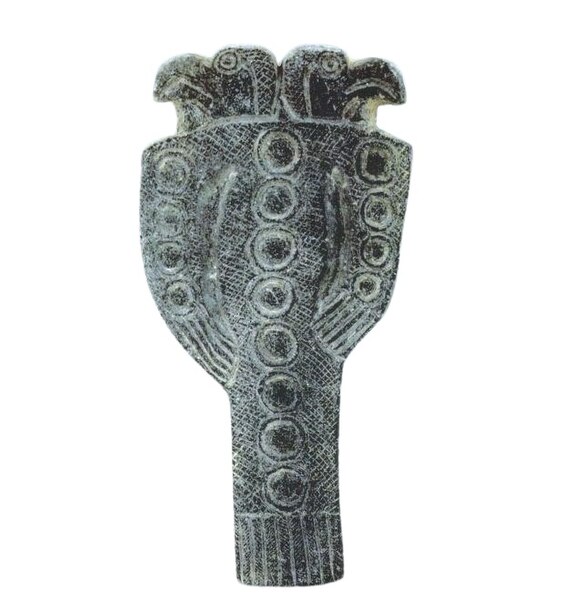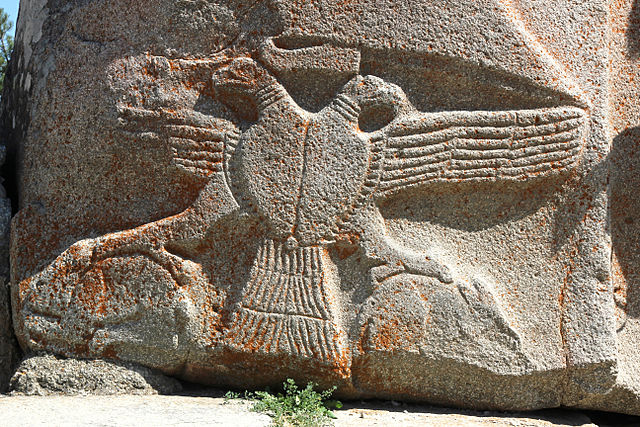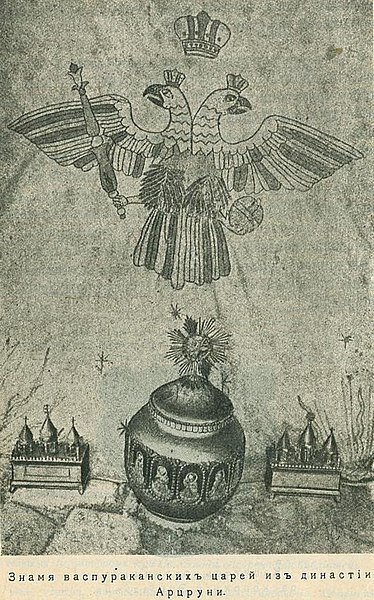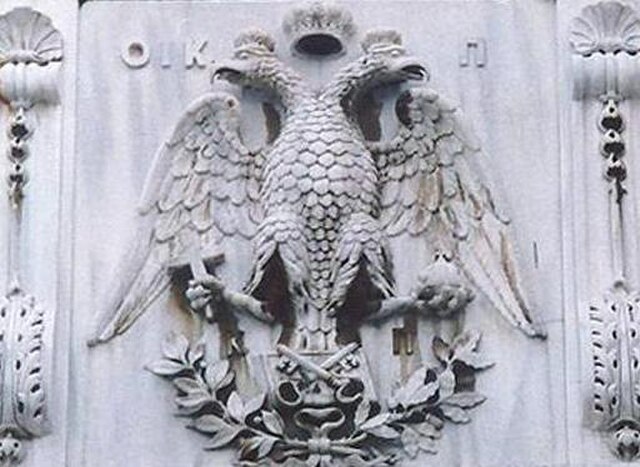The flag of Albania depicts a silhouetted black double-headed eagle in the center of a red background. The red stands for bravery, strength, valour and bloodshed, while the Eagle represents the sovereign state of Albania. The flag was established as the national flag of Albania when the country gained its independence from the Ottoman Empire in 1912.
Double-headed eagle found in a mural inside the Shën Ndoji church in Rodon, possibly dating from the 15th century
Albanian flag on a pole at the entrance of Krujë Castle
Postcard showing an illustration of the Albanian flag alongside a photograph of Aladro Kastriota (c. 1913)
This postcard by Spiridon Ilo, was printed as a sign of gratitude for the US assistance in reaffirming the legitimacy of the new Albanian State. The postcard came into circulation in 1920, the year when President Woodrow Wilson famously arbitrated his support for the independence of Albania at the Paris Peace Conference.
The double-headed eagle is an iconographic symbol originating in the Bronze Age. A heraldic charge, it is used with the concept of an empire. Most modern uses of the emblem are directly or indirectly associated with its use by the late Byzantine Empire, originally a dynastic emblem of the Palaiologoi. It was adopted during the Late Medieval to Early Modern period in the Holy Roman Empire, Albania and in Orthodox principalities, representing an augmentation of the (single-headed) eagle or Aquila associated with the Roman Empire. In a few places, among them the Holy Roman Empire and Russia, the motif was further augmented to create the less prominent triple-headed eagle.
Double-headed eagle in Jiroft, Iran, 3rd millennium BC.
Double-headed eagle on the Sphinx Gates of the Hittites in Anatolia, today in Alaca Höyük, Turkey
The double-headed eagle device used in the flag of Kingdom of Vaspurakan (r. 908–1021)
Emblem of the Ecumenical Patriarchate of Constantinople, entrance of St. George's Cathedral, Istanbul








